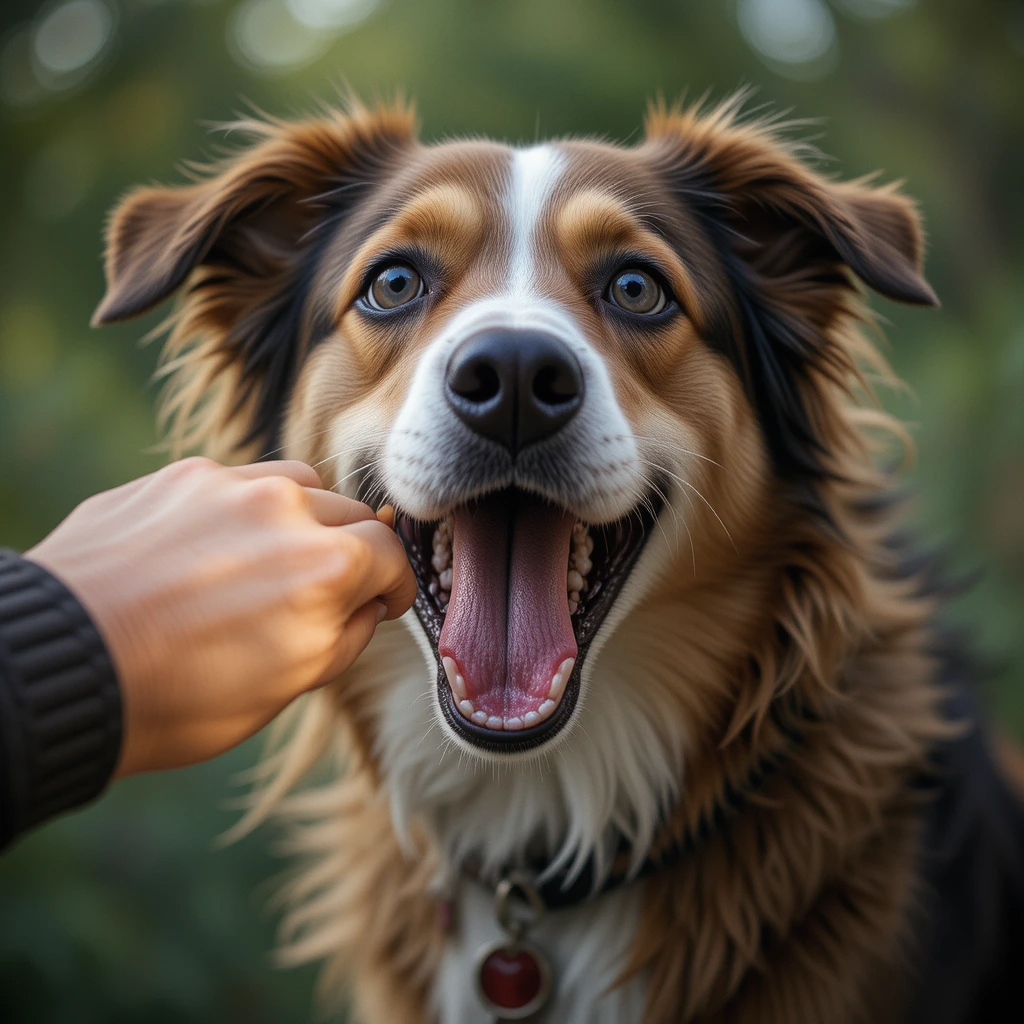Trigger stacking in dogs happens when a series of situations—whether good or bad—build up in quick succession, with no time for the dog to calm down between each event. Imagine a dog being taken on a walk down a busy high street, encountering multiple people who approach and interact with them. Each interaction might increase the dog’s excitement or anxiety, depending on their feelings toward new people. As these triggers stack up, the dog’s arousal or alertness rises, and eventually, they become overwhelmed.
For example, after several interactions, the dog might begin to feel more stressed, and their ability to relax becomes difficult. This can lead to the dog being completely unable to stay calm or composed. Dogs that experience trigger stacking can find it challenging to cope with the next person that approaches, especially if they’re already at their emotional limit. Over time, the dog’s anxiety and excitement from these stacked triggers can cause them to become completely overwhelmed, making it even harder for them to return to a peaceful state.
Table of Contents

What is trigger stacking in a dog?
Trigger stacking is when a dog goes through several stressful events in a short period. Each event (or trigger) may seem small on its own, but together, they build up and overwhelm the dog. This can cause sudden fear, aggression, or anxiety. For example, if your dog hears thunder, sees a stranger, and then encounters a barking dog—these events can stack and lead to a strong reaction.
Reaching the Tipping Point in Dogs
Behaviour in dogs can change dramatically when they reach their tipping point, a moment when they move from calmly tolerating a situation to being completely unable to cope. This is often referred to as a threshold, and it varies from dog to dog. Every dog has their own unique response, shaped by different factors, making their tipping point personal and distinct. As a dog gets closer to their limit, they may become increasingly excited or fearful, causing them to respond more sensitively to what is happening around them. The sensitivity to stimuli may rise, especially as the dog faces more challenging situations, stacking one on top of the other.
What makes this even more complex is that a dog’s body responds physiologically to their emotions, which affects their behaviour. This means their stress response (whether acute or chronic) can push them past their tipping point. When there’s little time for the dog to return to a balanced state between each arousing situation, their stress increases, leading to a homeostatic disruption. This can make it harder for them to remain calm and composed, especially when multiple triggers are stacking up in their environment.
Situation Stacking in the Veterinary Clinic
When a dog experiences situations in the veterinary clinic, it can lead to trigger stacking, where multiple stressors accumulate and overwhelm the dog. For instance, the journey to the clinic itself, such as traveling by public transport, can already cause anxiety. Then, once the dog arrives, the waiting room becomes another stress point, with the sights, sounds, and smells of other animals who may be unwell, frightened, or excited. These factors can further heighten the dog’s arousal, adding to the buildup of stress.
Once inside the consultation room, the owner’s behaviour plays a significant role. If the owner is agitated or restless, the dog is likely to pick up on that energy, which adds to their discomfort. The process of being lifted, restrained, and handled on the consultation table can feel invasive and heighten anxiety. Additionally, the clinician’s behaviour—whether tense, agitated, or forceful—adds even more pressure on the dog, leading to a greater negative accumulative effect. All of these factors work together, creating a perfect storm of stress for the dog.
Avoiding Situation Stacking in the Veterinary Clinic
Being aware of the concept of situation stacking helps us understand how triggers can easily build up and affect the dogs in our care. When we recognize this, we can take steps to prevent multiple stressors from overwhelming the dog. For veterinary clinics, there are a couple of ways to address this issue. First, ensuring a calm environment for both the dog and their owner can help. Reducing noise, sights, and any distractions can make the experience less stressful. Also, giving dogs time to adjust between stressful events, like waiting in the waiting room, can prevent further stacking of triggers.
Another key step is understanding how small actions can have a big impact. For example, training the staff to recognize signs of anxiety or stress in dogs and adjusting their handling and approach accordingly can greatly reduce unnecessary stress. This is how veterinary clinics can contribute positively to keeping the dogs in their care as calm and comfortable as possible. Keeping these factors in mind will help ensure that triggers don’t accumulate in a way that causes long-term distress.

Help Owners Understand Situation-Stacking
As a dog owner, it’s important to be aware of the triggers that could affect your dog before an appointment. Even though you might not be able to remove every stressor, like the pain a dog might feel, you can take steps to reduce the chances of other triggers that could cause further anxiety. For example, driving your dog to the appointment instead of using public transport can prevent the stress of being surrounded by strangers and noise. Additionally, if your dog is already feeling stressed, waiting in the car instead of a busy waiting room can help keep things calm. These small adjustments can reduce the buildup of stress and avoid heightening your dog’s arousal levels.
When planning for these situations, owners can also find out more about how to safely travel with their dog in a car or on public transport. Taking these steps allows you to manage your dog’s experience before they even enter the clinic, ultimately helping to reduce the potential for situation-stacking and making the overall visit smoother for both you and your dog.
Avoid Introducing Any Unnecessary Potential Triggers
To help prevent trigger stacking, it’s important to limit a dog’s exposure to sights, sounds, and smells that could increase their arousal or sensitivity. For example, in the waiting room, it’s helpful to have barriers between patients to avoid unsolicited eye contact or interaction. You can also reduce background sounds, like asking colleagues to avoid using clippers or lowering the telephone ringer volume. By controlling the environment in small ways, you can keep the dog calm and reduce the buildup of stress.
In addition to controlling the environment, it’s important to interact physically with the dog only when it’s absolutely necessary. Polite discouragement can also help by asking other people in the waiting room not to interact with anyone else’s pet, and encourage dog owners to sit apart from others. For dogs who are particularly challenged by the veterinary environment, you can signpost quieter times for booking appointments, though these times can never be fully guaranteed.

FAQ
How to stop trigger stacking?
To stop trigger stacking, give your dog time to calm down between stressful events. Avoid exposing your dog to too many triggers at once. Use positive reinforcement to slowly help your dog get used to its fears. Provide a safe, quiet space, and keep your dog’s routine steady to prevent stress from building up.
What does trigger stacked mean?
When a dog is trigger stacked, it means several stressors have added up, and the dog can no longer stay calm. It may bark, growl, snap, or hide—not from one cause, but because too many things happened too quickly. The dog’s emotional limit has been reached.
What does stacking mean with dogs?
In behavior, stacking refers to trigger stacking, when stress builds up from many small events. In dog shows, however, stacking means placing a dog in a certain pose to show off its body structure. So the meaning depends on the situation—behavioral stacking is about stress; show stacking is about posing.

